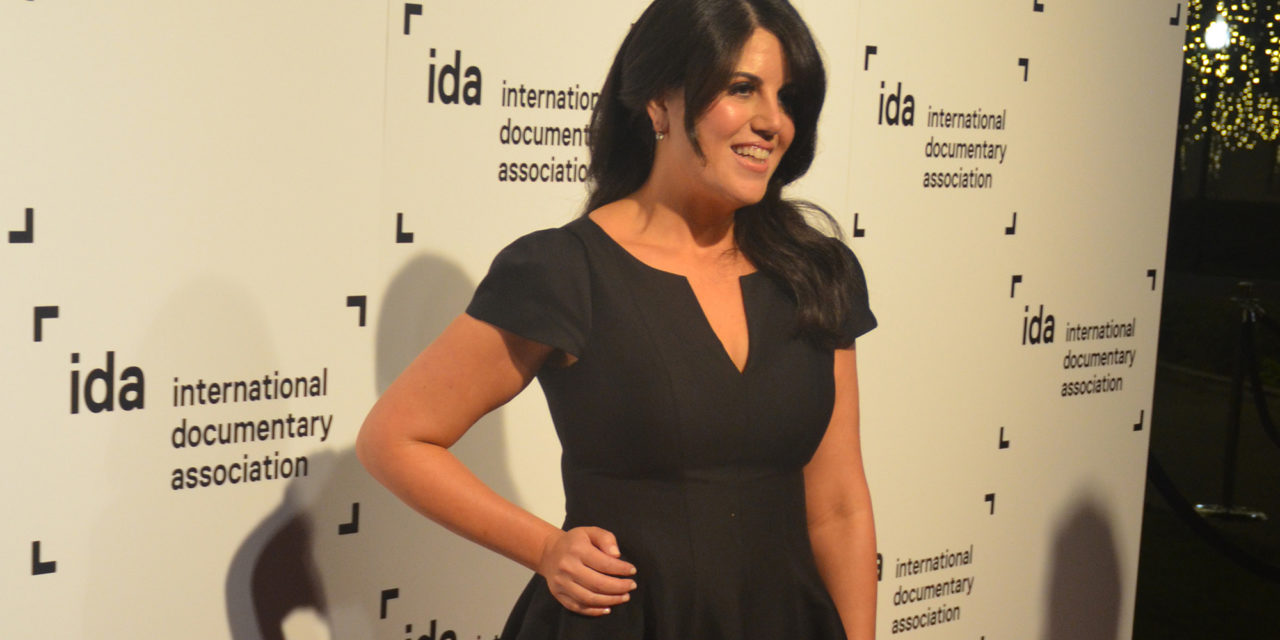Monica Lewinsky is an anti-bullying activist and a psychologist. I was fully aware of this, recently, when I googled her because I needed a link to use as an example in one of my “own your story” training sessions. This time, for some reason, I googled her name and added “news” before hitting the “search” button. What did I find? A couple of recent examples to strengthen my admiration for this woman. If owning one’s story was a sport, she would be drowning in Olympic medals.
For those who lost track of her life and career over the years, Monica Lewinsky bounced back from the character assassination that brought her to reluctant fame in the 90s by proving to be one of the cleverest and funniest humans currently alive on this planet. Having achieved that, she turned her considerable talents to activism, becoming an icon for anti-bullying campaigns in ways that Melania Trump can’t even begin to fathom.
For these and other obvious reasons, I was pleased to see that, as the international media picked up on her tweet and Musk’s response, they addressed Lewinsky correctly, as an anti-bullying activist and then proceeded to find something newsworthy about Elon Musk trying and failing to be witty and her not replying. They did an overall respectable job.
Of course, I was less pleased – but not surprised – by the tabloids using sexist headlines and cheap jokes and by the German Tesla Magazine calling her “The Former Intern” and including gratuitous sexist remarks all through their article (I’m not going to link to those articles, because they don’t deserve any more circulation than they are already getting). Why am I telling you this? To give you context. The jokes and remarks that some of the press and part of the general public are throwing at Lewinsky in 2020 refer to a news story that spanned from 1995 to 1996. Twenty-four years ago. Twenty-four years during which the derision, the humiliating references, and the base punchlines never abated. How does anyone survive this, let alone build a successful career out of anything other than spite? By owning her story.
How did Monica Lewinsky do it and what can we learn from her?
After spending ten years out of the public eye, Monika Lewinski broke her silence in 2015 with her TED talk “The price of shame”.
In a video spot from Fast Company, she explained the role storytelling played in her endeavour to own her story.
Lewinsky
calls it “reclaiming her narrative, which boils down to the same thing: moving
away from a narrative which defines your whole life and overshadows your work,
and on which you have no control. As she states, it was a lot of work that had
to be done over the last several years. It was about integrating her past and
working hard on not giving in to the outside world’s attempt to shame her into
silence.
What
absolutely blew my mind, however, was her humour: she has taken the tool that
was used most often to punch her down and appropriated it to start punching up.
And she is hilarious, smart, witty, and classy. Almost to the point of making
me forget the super-human strength needed to achieve that level of confidence.
Not only she has changed the narrative around herself, but she has also turned it around completely and turned into a powerful tool to fight bullying, to lift others up, and empower them. This has to be the ultimate victory of kindness over coarseness. Of empathy over selfishness. Because, as she puts it, “One of the ways we learn empathy is through experience.” And she has experience. More than anyone else in the world, one might say. She has been called the “patient zero” of cyberbullying. The experience of having thousands, even millions of strangers all over the world crack jokes at you, referencing the moment that destroyed your life, your career, and your peace, commenting on your appearance, making you into an archetype of derision was not as common in the mid-90s as it is today. Nowadays, terrifyingly, that type of violence is at everyone’s fingertips. Middle-schoolers can and have destroyed each other’s lives and political careers have crashed spectacularly over misplaced tweets or leaked photos. But Monica Lewinsky went through it first, in the pre-social-media world. There was no pattern, no guidebook on how to survive cyberbullying when cyberbullying was invented.
And is it
at all surprising that it was invented at a woman’s expense? That it involved
policing a woman’s body and shifting responsibility from the most powerful man
in the world to the only woman in the room? That it was used as a tool of
political warfare, with the only casualty being a woman’s life, reputation, and
future? And is it any wonder that, when the scandal resurfaced in 2016, during
Hillary Clinton’s presidential campaign, it was mostly rehashed to find a new
and hitherto unsuspected way of shaming a woman (albeit a different one) for
something a man did two decades earlier?
I don’t
find any of this remotely surprising. I do, however, find Lewinsky’s take on
the emotional pain that comes from this kind of abuse to be inspiring. She
draws our attention to the invisibility of this kind of pain, which makes it so
much more difficult to talk about.
“It might be crutches or a cast, but we don’t see it in the same way as emotional pain, and it’s not as immediately obvious.”
While the
“Lewinsky case” was an accident – or rather, it was a by-product of a larger
political game – cyberbullying today is an art and a science. It could be called
a craft. It is declined in many forms, each catering to a subset of users and
fine-tuned to end lives and careers and to be eternal and unabating.
Luckily for
us, we have patient zero on our side, helping us through and teaching us how to
weather this kind of storm and emerge victorious and unsinkable. To anyone who
asks me how to own their story, how to flip a bad narrative around, and how to
take control of the discourse around one’s own brand, personality, or company,
I will always answer by linking to Lewinsky’s video. Because you have to learn
from the best.





